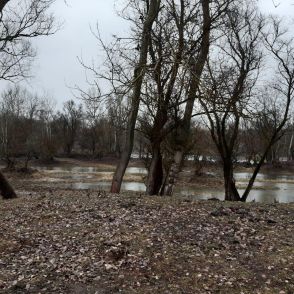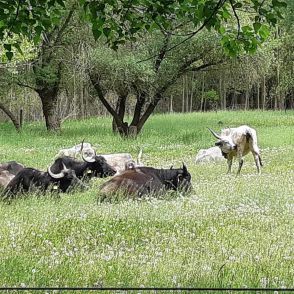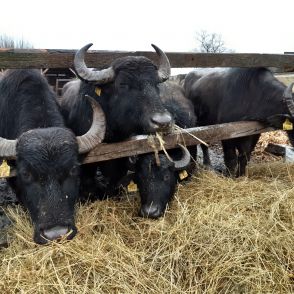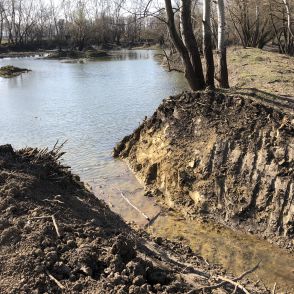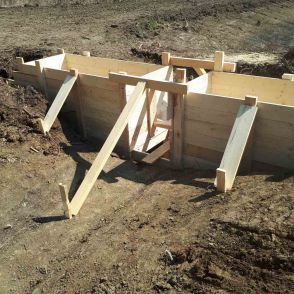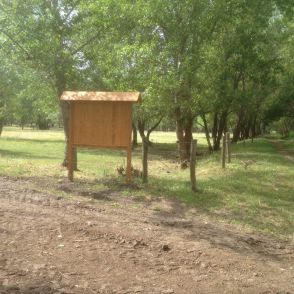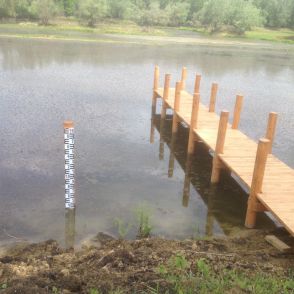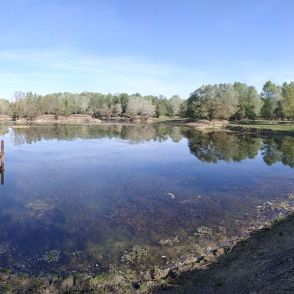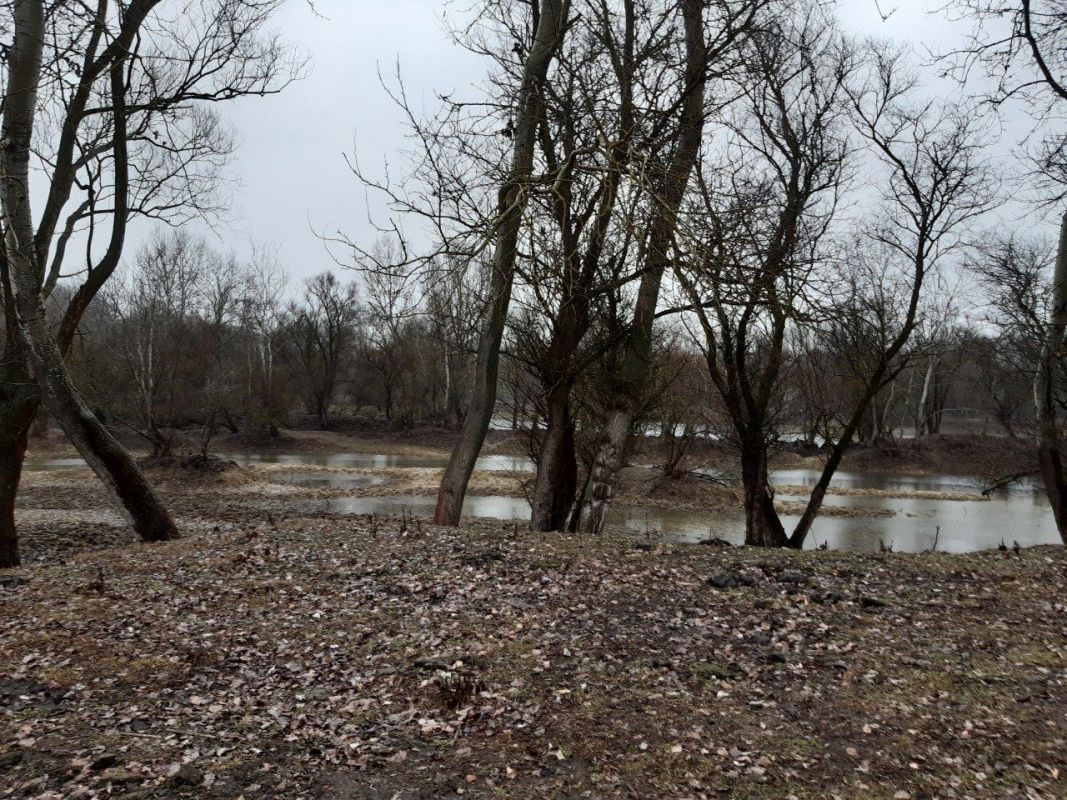
The Tisza floodplain in Tiszatarján, together with the cubic pits on the outskirts of the village, served as the site of the intervention.
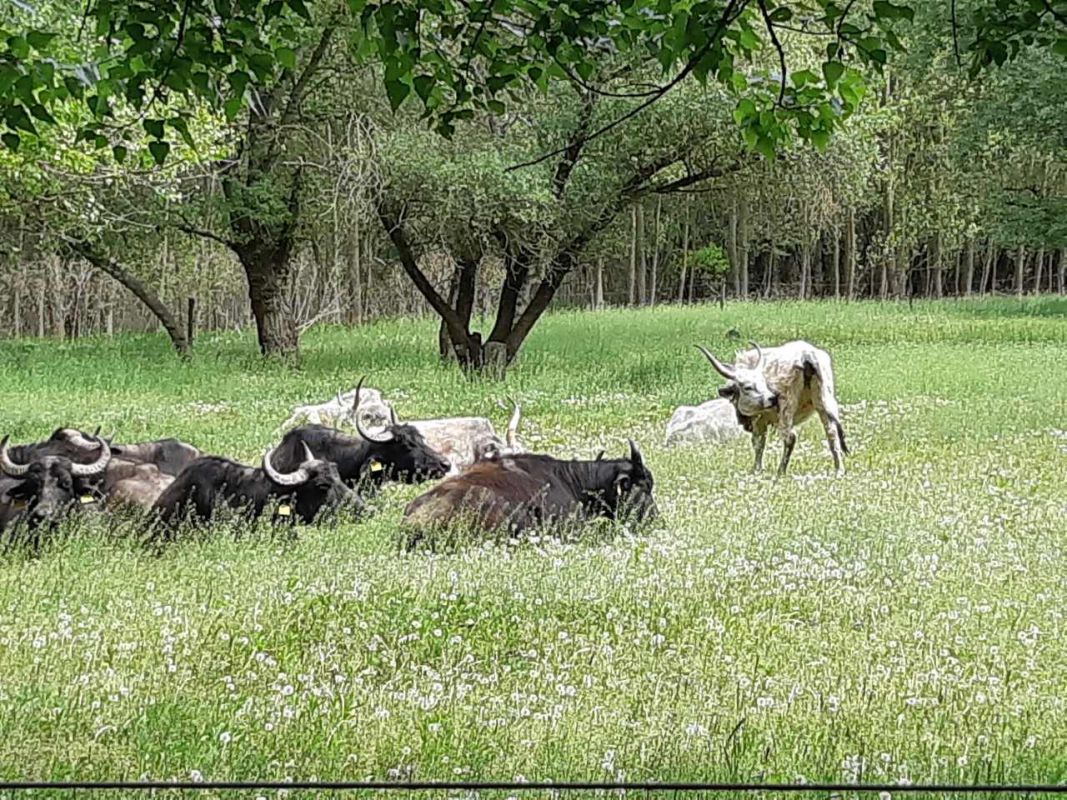
Semi-naturally, water buffalo and gray cattle herds began grazing in the floodplain, preventing the return of invasive species.
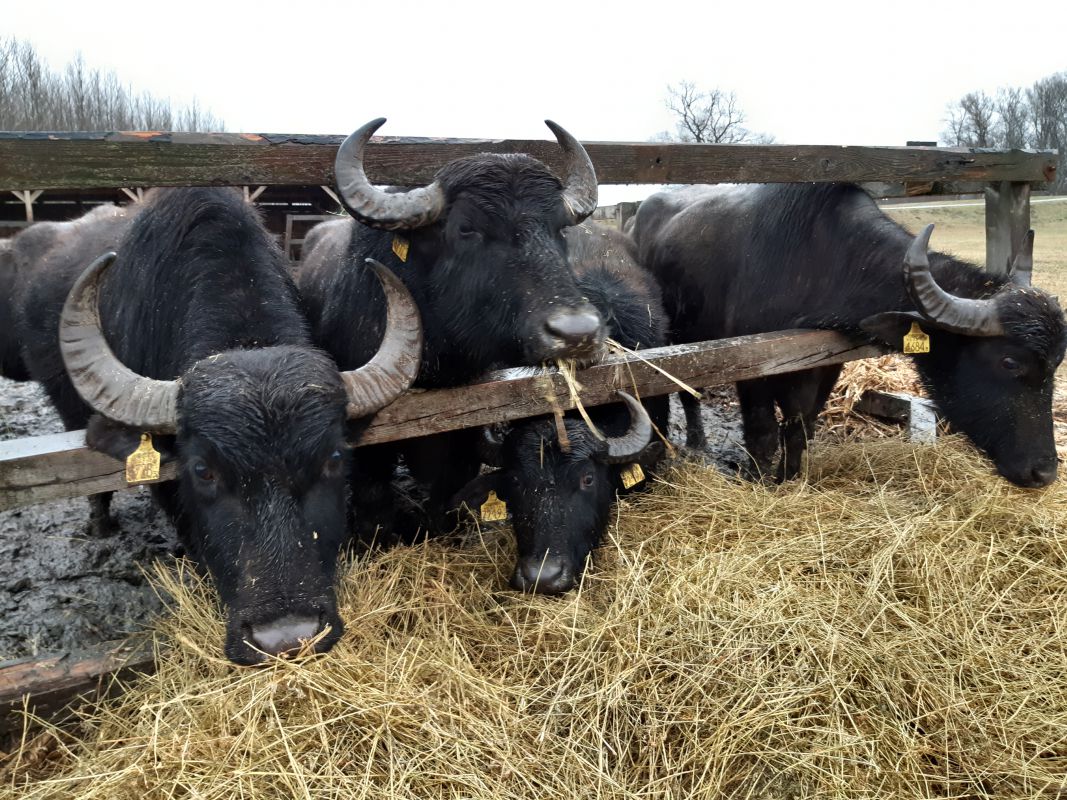
© Klára Kerpely, WWF Hungary. Extensively grazed buffalo in the floodplain in the winter accommodation.
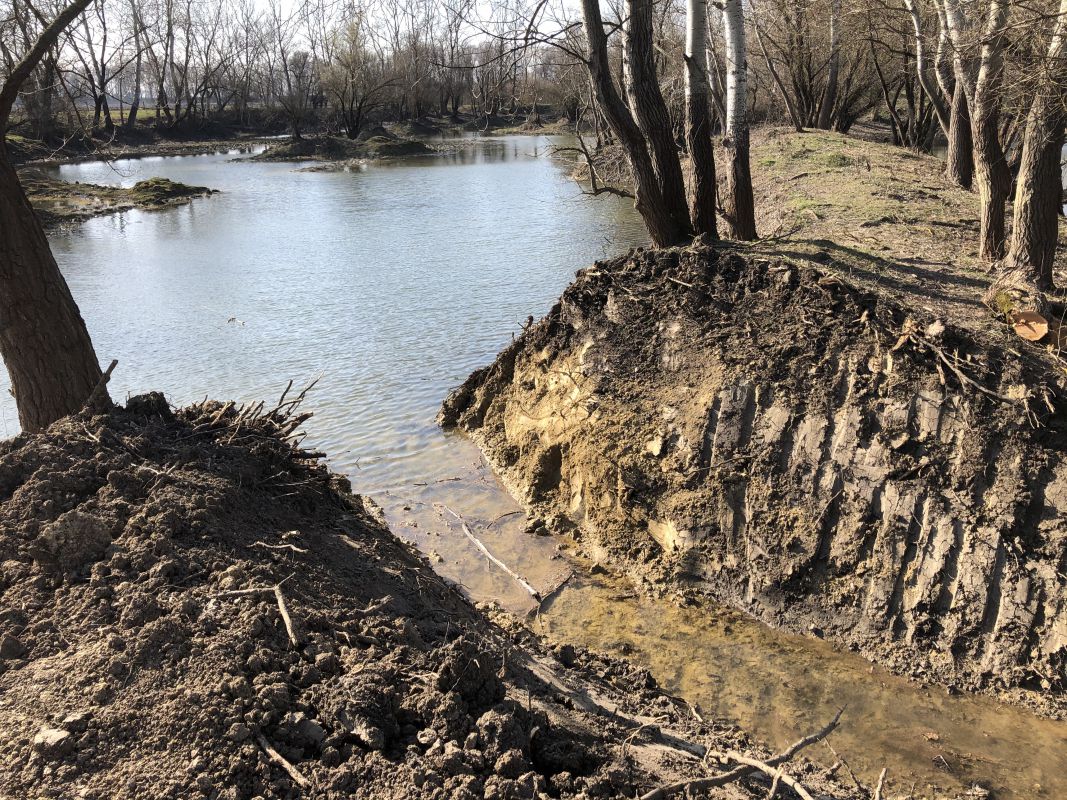
Permanent, open water surfaces were created in the floodplain covered with cubic pits. These were connected by cutting through the earth’s ridges.
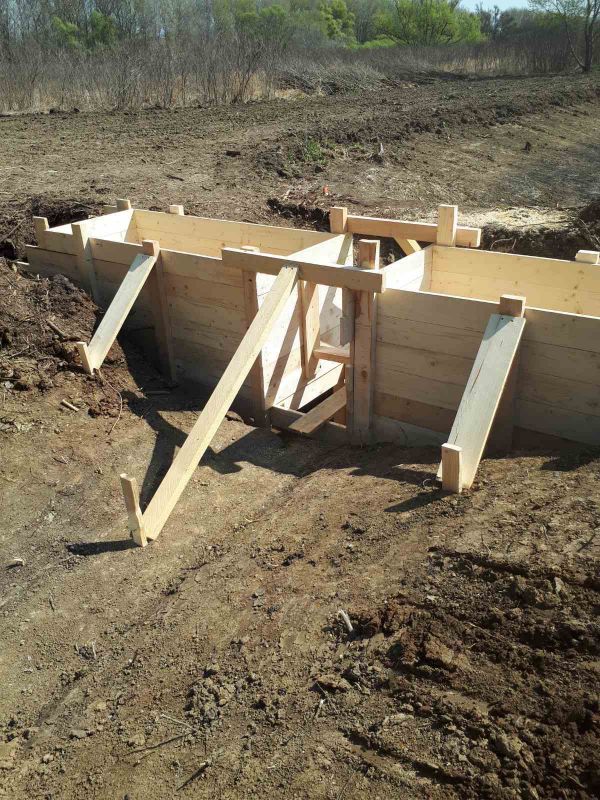
The water distribution and drainage between the basins of the developed lake were solved with the help of various structures.
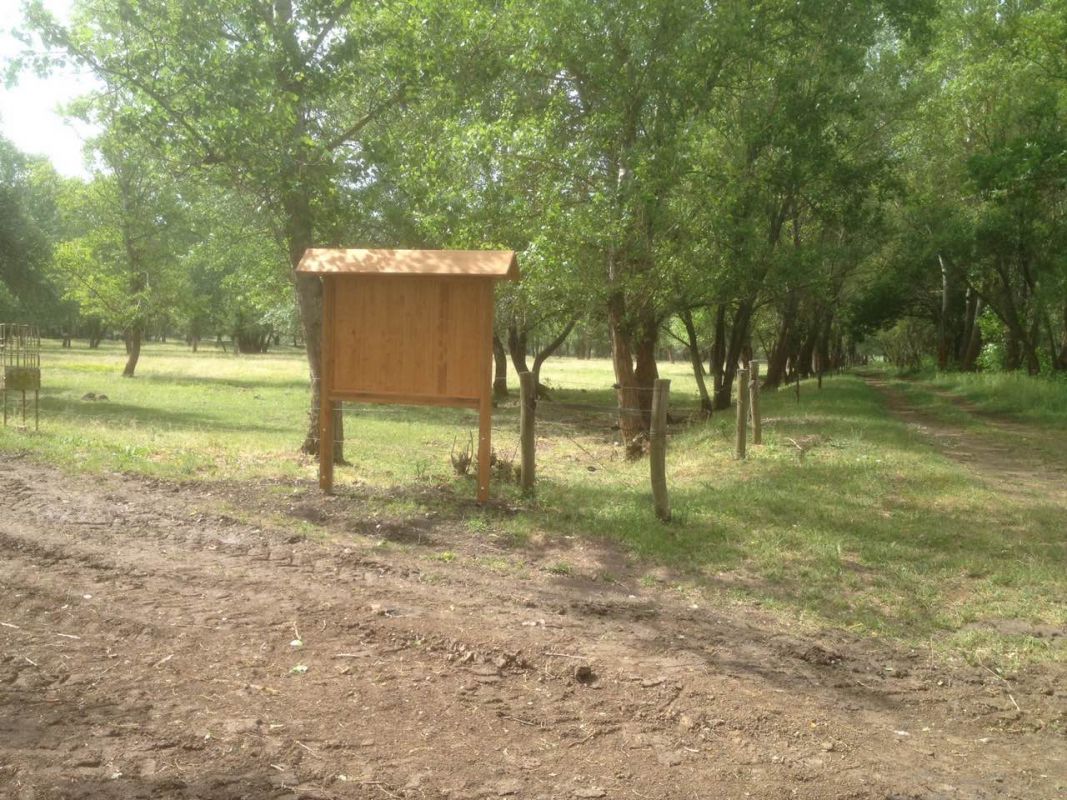
Ecotourism was also a key part of the concept in Tiszatarján. As part of this, a study trail was built around the lake.
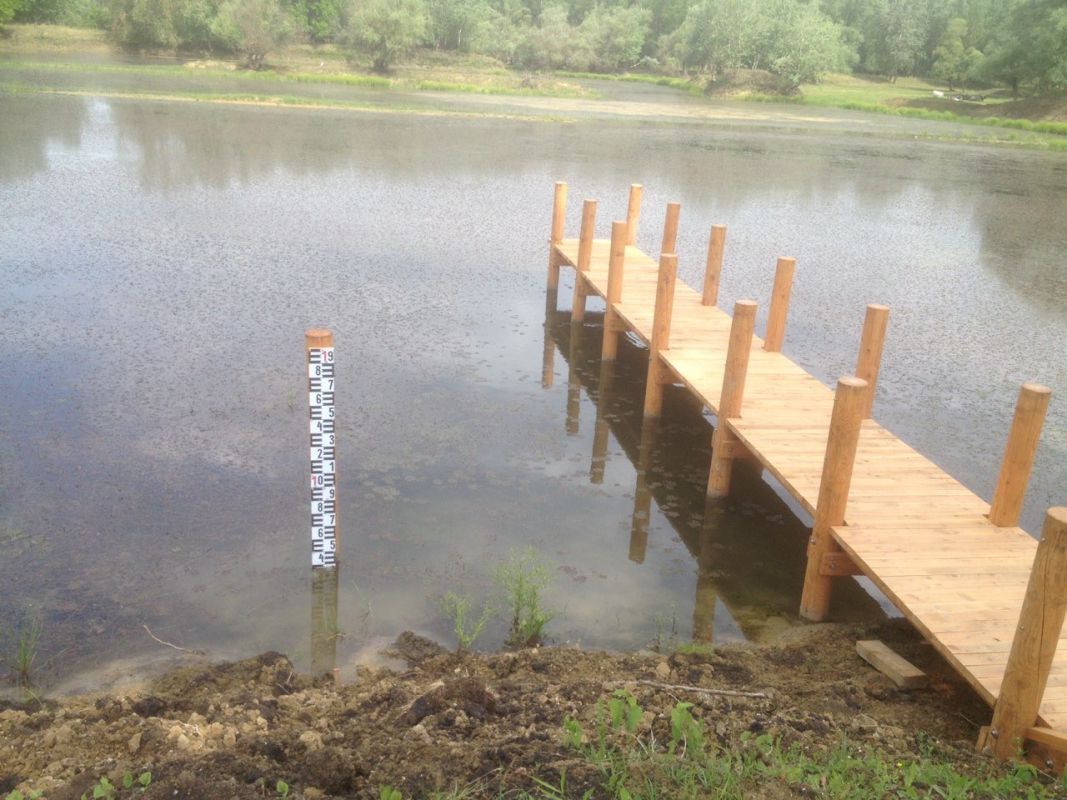
As part of the study trail, a pier has been built, with the help of which we can admire the created lake system from above the water surface.
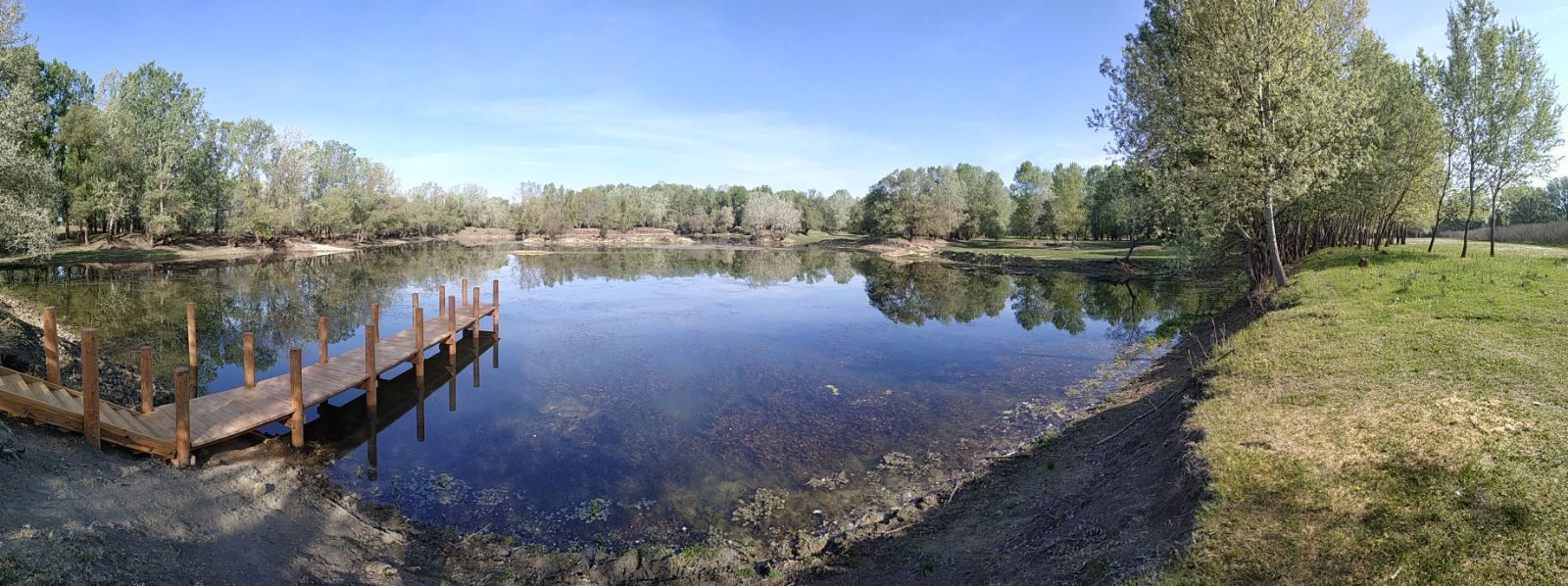
The lake has an impact not only on the microclimate, but also on the economy of the settlement due to its ecotourism value, not to mention the expansion of the recreational opportunities of t
